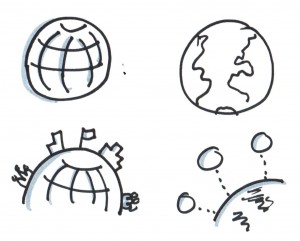 Fear has played an interesting role in my life. Or better said, confronting my fears has given me the opportunity to do things I would have never done before. For example I was afraid to go to Brazil as a 16 year old exchange student for a year, but it was a life changing experience – for the better. I have been afraid to be “unknowing” and vulnerable when facilitating groups, but those have often been pivotal moments. (By the way, the picture is of me there, many many moons ago!)
Fear has played an interesting role in my life. Or better said, confronting my fears has given me the opportunity to do things I would have never done before. For example I was afraid to go to Brazil as a 16 year old exchange student for a year, but it was a life changing experience – for the better. I have been afraid to be “unknowing” and vulnerable when facilitating groups, but those have often been pivotal moments. (By the way, the picture is of me there, many many moons ago!)
But fear within groups and between members has never shown up generatively. It seems to create tight fences between individuals in the group. Then I read Shawn Callahan (of Anecdote) recent post about An indicator of group fear in organisations and a wee insight arrived.
First of all, click away and read the post AND take the time to view the video. Do the little exercise. It is worth the 30 seconds of cogitation.
Shawn’s conclusion is that fear is killing creativity. He writes:
Ed Catmull, the CEO and co-founder of Pixar made this point clear in his recent book, Creativity Inc., that this biggest killer of creativity is fear.
I’d say that fear blocks more than creativity. It blocks aspects of collaboration, cooperation, knowledge sharing, learning and even the simple pleasures we CAN have working with each other.
I’ve worked with a number of organizations where fear is palpable. Sometimes it is in the more day to day relationships between team members. Sometimes it is hierarchical, but not always. It isn’t always “the boss” we fear. It may be someone on the team who is bullying or harassing (consciously or unconsciously – most the latter in my observation.) Sometimes it is the very culture of the organization, often from the top, that permeates everywhere.
Slight side note: I want to make a clear distinction that I do not equate fear directly with dissent, diversity or critical thinking. They may show up together. But the absence of fear is not necessarily bland indifference, ok? In fact, when fear is not present, I think we can better use our disagreements and diversity. So I don’t want to fall into the false trap of surface “niceness.” That kind of niceness can be a response to fear to cover it up and that doesn’t work well either! I’ll also state for the record that being “nice” as in using compassion and respect is something I’m all for. The word “nice” is a tricky one.
What really interests me are the people who seem to be resilient to fear. They don’t let fear of being dismissed, or not “liked” keep them from their own personal brand of excellence.
I find it hard to combat top down fear, so maybe I should pay more attention to those “positive deviants” who seem resilient. Have any clues on why they are that way? How we can nurture more of the resilience?



